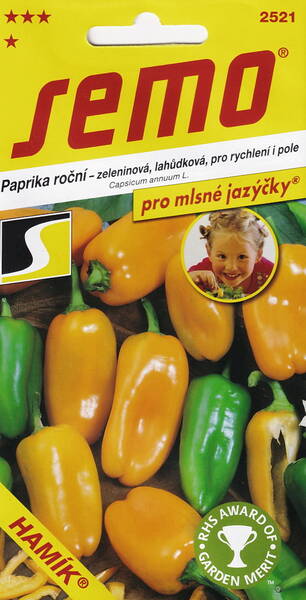Incredibly aromatic and delicious!
Very productive, mid-late variety of sweet "snack pepper" for cultivation in the open and protected ground.
The plant is low, forming small fruits, weighing 30-40 g, almost without seeds, very sweet taste.
The colour of the fruits at the stage of technical ripeness is dark green, at the biological stage, it is orange.
It has increased resistance to the tobacco mosaic virus.
It is intended for fresh consumption, as well as for whole-fruit canning in biological ripeness.
Delicious fresh or canned.
* Pricking.
The word "pricking out" holds no mystery. Those who dislike this word can use "thinning out" a concept also widely used among gardeners.
This process is designed to allow the plant to develop shoots without the risk of becoming overcrowded.
Although each seed package instructs against over-sowing, in most cases the seeding is still too dense: if plants compete with each other for nutrients, light, and air, weak and elongated seedlings grow, and this is considered a critical time for transplanting.
Therefore, this operation is very important in the life of the plant: after planting, the seedling becomes stronger.
Plants are transplanted into light, humus-rich soil, which should be more nutritious than the seeding soil. Transplantation can be done in a transplant box, a warm greenhouse, a seedling-potting block, clay pots, or peat-humus pots.
On a flat surface of the substrate, make a depression with your finger or a stick to a depth such that the roots do not bend, but have sufficient space for development.
Then, compact the soil around the plant with your fingers. It's important not to plant too close together.
The main rule : when, in addition to the two embryonic ones, a second pair of leaves clearly appears, you should pick.
After transplanting, the plants need to be watered. The seedlings will straighten up in a day at most, especially if they were covered with glass or plastic. Afterward, ensure adequate airflow.
Vegetable gardener's tip: repeatedly transplanting cucumbers and tomatoes promotes intensive root development. This results in stronger plants.
When removing the seedling from the propagation container, extreme caution is essential. First, loosen the soil slightly to avoid damaging the plant.












